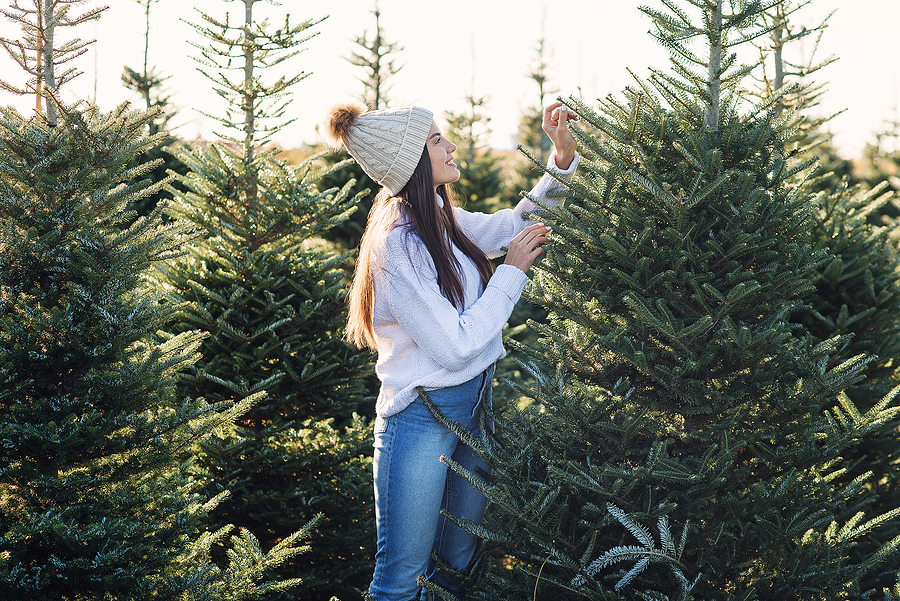Common Christmas Tree Pests
- Details

As the holidays approach and you make plans to get your Christmas tree it's important to know certain bugs may travel indoors with your tree. These pests will settle in and overwinter in many species of trees that are used during Christmas. Most are harmless but can still be a nuisance and can be difficult to spot.
Our list of common Christma tree pests includes some that may sound familiar and others you may not have heard of.
Aphids and Adelgids on Christmas trees
Aphids are one of the most common Christmas tree pests. Cinara Aphids in particular are drawn to the sap on conifer trees including Fraser firs. These insects don't require much for survival and can even survive on the tree's needles. They appear brown or black, with large bodies, and are much larger than other aphid species, growing up to ¼ inch long. Aphids are known to reproduce quickly and the warmth of homes can trigger their eggs to hatch.
Adelgids are a smaller species of aphids, reaching a size of 3 mm long, black and oval-shaped, and covered with a wooly-looking white wax. Trees with large infestations of these pests can become more vulnerable to bark beetle infestations.
Bark Beetle infestation in Christmas trees
Bark beetles appear as hard-bodied red, brown, or black bugs about the size of a grain of rice. These pests get their name from their preference to live in tree bark. As they bore into the tree trunk, they create small holes and fine sawdust will be noticed. Fortunately, these pests don't pose a risk of damage to indoor furniture as it’s too dry.
Praying Mantis and their egg sacs in Christmas trees
Praying mantis are considered welcome guests in gardens as they eat a large variety of pests. When they lay egg sacs in Christmas trees that end up in your home, it can be a bit unnerving. The warmth of being indoors will prompt hatching and hundreds of babies can emerge from egg sacs that resemble walnuts. Once they hatch, they will starve as they aren't meant to hatch until spring, outdoors, of course.
If you spot these egg clusters in your tree you can carefully remove the branch and place it outside, preferably on an evergreen or other shrub that is somewhat protected from extreme weather conditions. Or you can take the entire tree outside and replace it.
Some preventative actions to consider
When picking out your tree, take a few minutes to look it over for any signs of pests. Check under branches and around the base. If you spot any cocoons or an unusual-looking growth on branches, it may be best to pick another one or you may choose to prune the affected branches.
If you have the space in a garage or under a covered carport allow the tree to sit there for a few days while you inspect it further before moving it indoors. After the holidays when you decide it's time to remove the Christmas tree, be sure to vacuum thoroughly around where the tree was to remove any pests or debris that may have fallen off during its time in your home.
Let the professionals handle your holiday pest concerns
Most of the pests that can infest Christmas trees don't pose a risk to humans or pets, but you still will want to take action if they find their way in. Many pests can attract others when they die if they aren't discovered and removed swiftly.
Eagle Pest Services is committed to quality customer care, we want you and your family to enjoy the holidays free from pests. Contact us today at 1-(866) 281-1822 or visit us online to schedule a free inspection.





